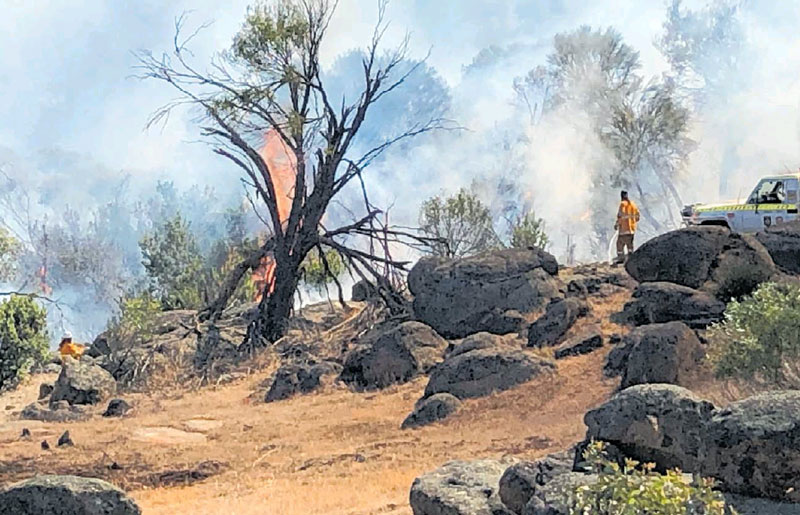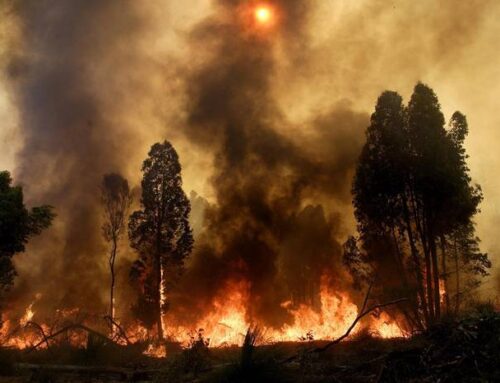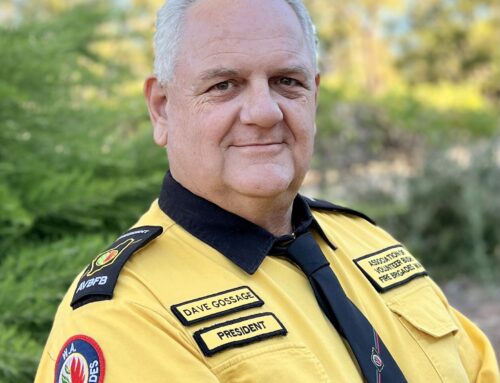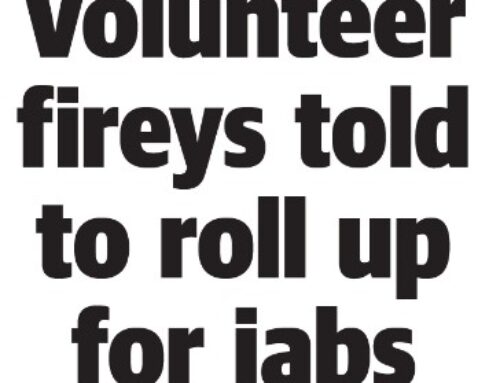WA’s regional firefighting units have faced their first big tests of the bushfire season, with more than 800ha of crop destroyed by blazes in the past week. Three header fires in four days burned through about 830ha of cropping land at Williams, in East Popanyinning and Tincurrin. All three fires were believed to have started in the vicinity of harvest machinery, with flames spreading through paddocks and into surrounding scrub.
The worst fire was at Warrening Gully Farm, near Williams. It was out of control for five hours last Thursday.
WA’s regional firefighting units have faced their first major tests of the bushfire season with more than 800ha of crop destroyed by blazes in the past week.
Three header fires in four days burned through an estimated combined 830ha of cropping land at Williams, in East Popanyinning and Tincurrin.
All three fires were believed to have started within the vicinity of harvest machinery, with flames spreading throughout the paddocks and into surrounding scrub.
The worst of the three blazes was at Warrening Gully Farm, near Williams on Zilco Road, which started about 1pm last Thursday and took five hours to control.
The fire ripped through about 400ha of crop and part of a blue gum plantation, destroyed a header and chaff cart and damaged a volunteer firefighter’s ute.
The fire drew bushfire brigades and volunteer fire and rescue services from all over the area to help extinguish the blaze.
Infrastructure on the property, including a shed and the family home which was just metres from the fire — was saved by firefighters
Williams chief bushfire control officer Geoff McKeown said there had been a “great response” from neighbouring shires to get “on top of the blaze”.
Department of Fire and Emergency Services sent two water bombers and a spotter plane from
Bunbury to help battle the blaze. “They (DFES) were really helpful in helping us get the fire extinguished, dumping water in the areas that were more challenging to get to” Mr McKeown said.
“I think the fireys were great; there were around 60 or so units there and considering the amount of land that it burnt, they did a very good job.
Just three days later, another fire broke out in East Popanyinning, again caused by harvest
machinery and burning through the paddock and into surrounding scrub.
The fire started about 1pm, and was contained in about 11⁄ hours
2 after burning through about 30ha of land, mostly rocky bushland.
Pingelly farmer John Hassell said the blaze started after the header his son, George, was driving hit some rocks near the edge of a paddock.
Mr Hassell said 1ha of his lupins and 50 bales of his neighbour’s hay were destroyed but it was “extremely lucky” no one was hurt.
“It has made us realise there are things we could do to fine-tune our operation,” he said. “I think all farmers should do a fire drill, it could help drastically.”
Shire of Wickepin chief bushfire control officer Rodger Butler said it was an extremely difficult fire to fight. “It was on extremely rough terrain and the blokes just couldn’t get to it,” he said.
The next afternoon, a header caught fire at Tincurrin, near the intersection of Tincurrin Road and Brown Road. The blaze was contained in a matter of hours.
Crop damage was minimal at Tincurrin after it tore through about 400ha of land that had already been harvested — but it did destroy the front of the header.
The fire was attended by fire units of neighbouring shires, but majority of those attending the fire were neighbouring farmers.
The blazes come three months after a royal commission into Australia’s Black Summer bushfires of 2019-2020 delivered a report warning Australia must prepare for an “alarming” future of simultaneous and worsening. natural disasters.
During the royal commission, DFES commissioner Darren Klemm said WA’s bushfire season could soon start in the north in October/November, while in the south it traditionally started in December.
EMMA TAYLOR & CALLY DUPE
Countryman Newspaper






